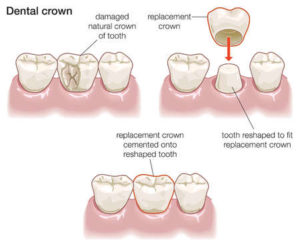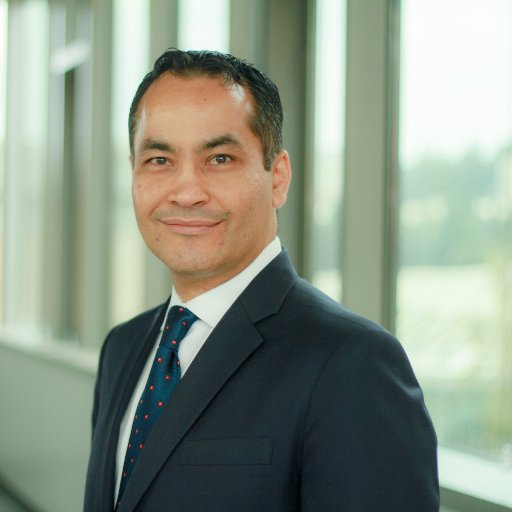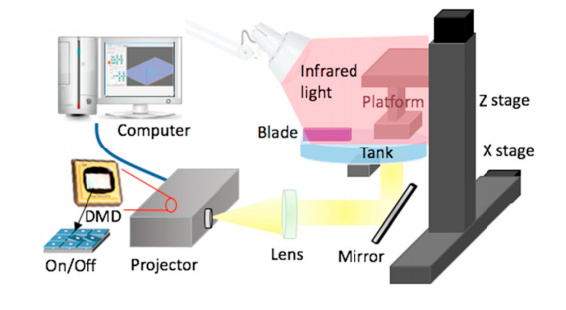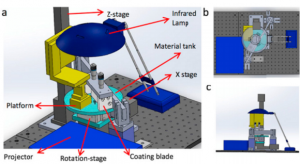New Facility for Bioengineering Research Opens in Los Angeles
In a world eager to solve the problem of rejection in organ transplantation, a young American scientist developed a breakthrough test in 1964 that would help establish the compatibility of tissue types between organ donors and patients in need of transplants. Even though, today, efforts to meet organ transplant demand are shifting toward the field of bioengineering, as researchers search for ways to recreate complex organs with patient-derived cells, the legacy of that scientist, Paul Ichiro Terasaki, continues to inspire discoveries in transplant medicine through his philanthropic ventures.
The Terasaki Institute for Biomedical Innovation (TIBI), a nonprofit research organization established by Terasaki, professor emeritus of surgery at the David Geffen School of Medicine at the University of California Los Angeles (UCLA), will open the doors to a new facility in 2022. The newly-acquired addition will house interdisciplinary research in bioengineering, micro- and nanoscale technologies to enable transformative biomedical innovation as part of continuing research to solve the biggest problems related to organ transplantation and beyond.
Earlier this month, the Terasaki Institute announced the revamping of a building in the Woodland Hills area of the city of Los Angeles. Once home to the Weider Health and Fitness Center, created by bodybuilder and entrepreneur Joe Weider, the two-story building will be custom-designed to house the latest technology in cutting-edge research and will provide 50,000 square feet of floor space for up to 200 employees.
Located just 22 miles north of the original Terasaki Institute facilities in Westwood, the new space devoted to laboratory research will be designed to accommodate multiple teams of scientists, who will be developing bioengineered systems, devices, and other products with several biomedical applications. This new facility will be fully equipped to enable such technologies as tissue engineering and regeneration, biofabrication using 3D printing, nano- and micro-engineering, stem cell engineering, and the creation of human organs on chips.
When the new facility is inaugurated, with the renovation of the building set to begin in fall 2020, it will become the Terasaki Institute’s third research facility. In addition to the ample space and unique design features of the laboratory, the new facility will include in-house technology translation capabilities to be able to build prototypes and scale models of devices engineered by the institute. It will also be able to accommodate meetings, seminars, and conferences to further the education and exchange of ideas among its researchers and collaborators.
“I’m very excited about the addition of the new building to the Terasaki Institute. I believe that this addition will give us needed research space to bring together a number of leading scientists in our efforts to develop the next generation of biomedical innovations,” said Terasaki Institute’s new director and CEO, Ali Khademhosseini. “I’m particularly excited about furthering the great legacy of the Weider family and the building’s history in promoting health and fitness by focusing on individualized cures and diagnostics.”
Previously at Harvard Medical School, the Wyss Institute for Biologically Inspired Engineering, and most recently at UCLA Bioengineering, Khademhosseini has been an influential figure in pushing bioengineering forward. His research in regenerative medicine, tissue engineering, and micro- and nanotechnologies for the treatment of diseases has been related to advancements that allow reprogramming of adult cells to become progenitors, as well as editing genes. The bioengineer has also created a technique that uses a specially adapted 3D printer that could help advance the field of regenerative medicine by making it possible to 3D print complex artificial tissues on demand. He has also established the Khademhosseini Lab, an industry-leading tissue engineering lab that is co-sponsored by both MIT and Harvard and acts as a strategic partner to 3D bioprinting startup BioBots.
Stewart Han, president of the Terasaki Institute, has been working hard overseeing the planning and renovation of the new building: “It is exciting to be able to create a brand-new laboratory and research facility from the ground up, and it will greatly enhance our research capabilities when it’s completed. We also know that the new building will facilitate the future growth of our institute.
Founded in 2001, the Terasaki Institute was made possible through an endowment from the late Paul Terasaki, and it is expected to continue leveraging scientific advancements that enable an understanding of personalized medicine, from the macroscale of human tissues down to the microscale of genes, as well as to create technological solutions for some of the most pressing medical problems of our time.
“The board of the Terasaki Institute is very excited about the purchase of the new building in Woodland Hills, and we look forward to developing it into a world-class biomedical research center,” said board chair and diagnostic radiology specialist Keith Terasaki. “My father, the late Paul I. Terasaki, started the Terasaki Institute in hopes that it will make impactful discoveries in medical research. This new research facility will enable us to do so.”
To the field of transplant surgery, transplant pioneer Paul Terasaki enabled a broad understanding of organ transplant outcomes around the world. More than 70 years after his original discovery, patients still rely on organ donor transplants and the fundamentals of Terasaki’s laboratory developed tissue typing tests are still used today for the determination of transplant compatibility. Nonetheless, the Terasaki Institute envisions a world where personalized medicine is available to all. So, as the researchers at the institute continue to address the challenges that can finally advance the field of organ transplants from human donors to bioengineered artificial organs, they might bridge the gap between sickness and health. With one of the most productive 3D printing researchers as director, Khademhosseini, and a new facility to further explore biofabrication technology, we can expect to hear much more from the Terasaki Institute in years to come.
The post New Facility for Bioengineering Research Opens in Los Angeles appeared first on 3DPrint.com | The Voice of 3D Printing / Additive Manufacturing.
UCLA granted $1.5 million to develop eco-friendly 3D printable concrete
3D printing job market movements: Lubrizol, MyMiniFactory, Fast Radius, M.Holland, AMBER
TCMIP-SL A New High Resolution and High Speed 3D Printing Process
 Each year in the US, about 40 million provisional teeth restorations take place, and the temporary bridges and crowns used in these procedures are necessary to protect a patient’s teeth until the permanent hardware is ready to be attached. These dental interventions aren’t cheap, but using 3D printing to manufacture the bridges and crowns can help to lower the cost.
Each year in the US, about 40 million provisional teeth restorations take place, and the temporary bridges and crowns used in these procedures are necessary to protect a patient’s teeth until the permanent hardware is ready to be attached. These dental interventions aren’t cheap, but using 3D printing to manufacture the bridges and crowns can help to lower the cost.
Most permanent dental bridges and crowns are made with materials like ceramics, metals, or other strong composites, and take around two weeks to create, though this can also be reduced by using 3D printing. However, no matter which manufacturing method you use, dental patients need temporary restorations, typically made of plastic, while waiting for their permanent devices to be ready to protect their teeth and keep them from shifting around. These are either made with shells that fit the original teeth, or built from scratch with molds, and will need to be trimmed a few times in the patient’s mouth before they’re cemented. Even with the trimming, these temporary restorations can break due to daily use, and a new one must be fabricated, which just seems to me like a colossal waste of time, money, and effort.
Not to worry – digital design technologies, like 3D printing, are currently being employed to make this practice easier and less time-consuming. A group of researchers from the University of California, Los Angeles (UCLA) recently published a paper, titled “3D Printing Temporary Crown and Bridge by Temperature Controlled Mask Image Projection Stereolithography,” in the Procedia Manufacturing journal that discusses using an SLA 3D printing method to manufacture these temporary teeth restorations.
The abstract reads, “Traditionally, the fabrication of temporary teeth restorations must go through multiple processes such as moulding, curing and post finishing, which requires extensive expertise of dentists. In addition, the handmade temporary restorations are usually unable to precisely fit the patient’s teeth due to limited formability of material. To address the problem, a three-dimensional (3D) printing technology named temperature controlled mask image projection based stereolithography (TCMIP-SL) is presented for dental materials in this paper, with aim to build customized temporary crown and bridge quickly for its use in dental offices. We first studied the photo-polymerization performance of commercial materials that are commonly used in dental industry. Then we discussed the temperature effect on curing performance and rheology of dental composite material. Based on the studies, we further developed our TCMIP-SL process by integrating a material coating system with controllable heating, so that the coated thin film of dental composite material can be selectively cured using high resolution patterned light beam. Several test cases are performed to demonstrate the TCMIP-SL process can 3D print high viscous temporary crown material with fast speed and high resolution.”
Mask image projection-based stereolithography (MIP-SL) processes use a set of horizontal planes to slice a 3D object, and each slice is converted into a 2D mask image. Then, a 2D patterned light beam, which is controlled by a digital micromirror device (DMD), is projected on the surface of a photocurable material, which is then cured layer by layer to build the 3D object – in this case, a temporary dental crown or bridge. This process is great for 3D printing macroscale model with hundreds of layers, and composite materials like multifunctional ceramic have been successfully fabricated with MIP-SL.
Unfortunately, the technology requires a special blade to achieve a thin, uniform coating of highly viscous materials, which can majorly affect the efficiency of the process.
“Polymer based composite provisional dental materials, which provide exceptional strength, flexibility, and abrasion resistance, are widely used to fabricate temporary restorations in dental industry; however, the flowability of most dental composite materials is poor due to its high viscosity and may bring difficulty to 3D printing processes,” the researchers wrote.
Temperature can affect the viscosity of polymer-based composite materials, as the viscosity will decrease when the temperature rises.
“In the paper, we extend our previous work on the ceramic-based MIP-SL process to the temperature controlled MIP-SL,” the researchers explained in the paper.
“To optimize the process parameters, we studied the rheology of photo-curable polymer based composite material at different temperatures. Based on the result, we further investigated the curing performance of photo-curable polymer based composite materials under a large range of temperature in order to identify the appropriate temperature setting. Furthermore, a new rotary movement design was implemented in the TCMIP-SL process to continuously spread viscous composite material into uniform thin layer.”
The team’s TCMIP-SL technology is able to 3D print temporary dental bridges and crowns at a high resolution and speed.
“The TCMIP-SL process shows significant strength over the existing 3D provisional restoration fabrication methods that are used for dentists,” the researchers concluded. “We believe the developed TCMIP-SL process has prodigious potential and extensive foreground in variety of fields ranging from high viscous multi-functional ceramic fabrication to composite material fabrication.”
Co-authors of the paper are Xiangjia Li, Benshuai Xie, Jie Jin, Yang Chai, and Yong Chen.
Discuss this story and other 3D printing topics at 3DPrintBoard.com or share your thoughts below.
3D Printing in Architecture, Engineering, Product Design: 3D Hubs Announces 2018 Student Grant Winners
 Last year, 3D Hubs, the world’s largest online network of 3D printing services, reported that nearly 500 applicants from 300 universities around the world applied for its extremely popular Student Grant program, which encourages students to make a positive influence on the world by using 3D printing in a creative way.
Last year, 3D Hubs, the world’s largest online network of 3D printing services, reported that nearly 500 applicants from 300 universities around the world applied for its extremely popular Student Grant program, which encourages students to make a positive influence on the world by using 3D printing in a creative way.
Just a few months ago, 3D Hubs announced that it would be kicking off its Student Grant program for the second year in a row, and offering grants to students who were able to illustrate the best use of 3D printing in the architecture, engineering, and product design fields. The grant amount was increased this year from $500 to $1,000, to be used for project expenses and continued funding. Unsurprisingly, the reception for the grant program was great once again.
“We’ve had some amazingly innovative applicants from around the world using 3D printing for some unique applications,” George Fisher-Wilson, the Communications Manager for 3D Hubs, told 3DPrint.com.
 There were applicants from more than 50 countries this time around, entering a wide array of innovative 3D printed projects that, as Fisher-Wilson told us, were diverse, including “underwater jetpacks, prosthetics for mountain biking and a 3D printed head with sensors used as a training device for robotic surgery.”
There were applicants from more than 50 countries this time around, entering a wide array of innovative 3D printed projects that, as Fisher-Wilson told us, were diverse, including “underwater jetpacks, prosthetics for mountain biking and a 3D printed head with sensors used as a training device for robotic surgery.”
Today, 3D Hubs has announced the three awardees for this year’s 3D Hubs Student Grant program, who were chosen based on the core concept, impact, and functionality of their projects, along with how creatively 3D printing was used to make their ideas a reality. 44.6% of all entries this year were for the Product Design category, followed up by 27.5% for Architecture and 25.9% for Engineering. For the second year in a row, Loughborough University in the UK had the most entries, while New York’s Pratt Institute came in second and the Politecnico di Milano in Italy was third.
“After the success of last year it was great to see more refreshing and new ideas being submitted,” said Filemon Schoffer, the CMO of 3D Hubs. “Our goal is to give students affordable access to all manufacturing technologies so [their] ideas don’t have to be restrictive. The 3D Hubs Student Grant is always a great way to showcase the talented people we having using the platform who will be pushing the industry forward.”
The winners of this year’s Architecture category were Benedikt Boschert and Miriam Boldt from Hochschule Koblenz in Rhineland-Palatinate, with their 3D printed model of a public swimming pool. Their particular project turned the old culture of bathing on its head and into a new, more modern concept.
“With the background of a real task for our city, this concept is weaving the conditions to [an] optimal design of contemporary public swimming pools,” explained Boschert and Boldt in their project description.”
The students 3D printed over 25 pieces for the swimming pool model with an FDM 3D printer, then bonded them together, which helped them turn their original design into a physical model.
Rory Geoghegan and Dr. Mendelsohn from UCLA, who are in the bioengineering and biomedical engineering field, were awarded the 3D Hubs grant in the Engineering category for their Training Platform for Transoral Robotic Surgery.
Using an FDM 3D printer and PLA materials, the two created a 3D printed model of a human head, which also includes a synthetic oral tumor and an anatomically accurate aerodigestive tract, to be used as a training platform.
“Robotic surgery can be used to remove tumors from deep inside the mouth,” Dr. Mendelsohn and Geoghegan explained. “Currently there is no training platform to facilitate the necessary skills acquisition for surgical residents.”
The model is cost-effective, which is good if replacement parts are needed quickly during training, and also includes force sensors underneath the structures that are most often damaged by new surgeons, such as the lips and teeth.
Archie O’Brien from Loughborough University was awarded the final 3D Hubs grant, in Product Design, for his 3D printed, underwater jet pack. He calls his project, named Cuda, the “fastest underwater jetpack” in the world, and says it can be used for multiple purposes, such as underwater exploration, lifeguard duties, “and of course fun.”
The functional 3D printed prototype, designed in SOLIDWORKS, shows what O’Brien calls a “complex use of 3D printing,” as the prototype and most of its internal components were 3D printed using mostly PLA.
During this year’s program, 3D Hubs also took a close look at the most commonly used 3D modeling software – SOLIDWORKS was at the top, with Rhino following closely behind – and the most popular materials (PLA was the clear winner) used by students for their projects.
To take a look at the rest of these findings, and all of the top ten finalists in each of the three award categories, check out the 3D Hubs blog post. While dates and categories won’t be confirmed until later this year, the 3D Hubs Student Grant, open to all registered students, will definitely be returning for a third iteration in 2019.
Discuss this story, and other 3D printing topics, at 3DPrintBoard.com, or share your thoughts in the Facebook comments below.
[Images provided by 3D Hubs]










